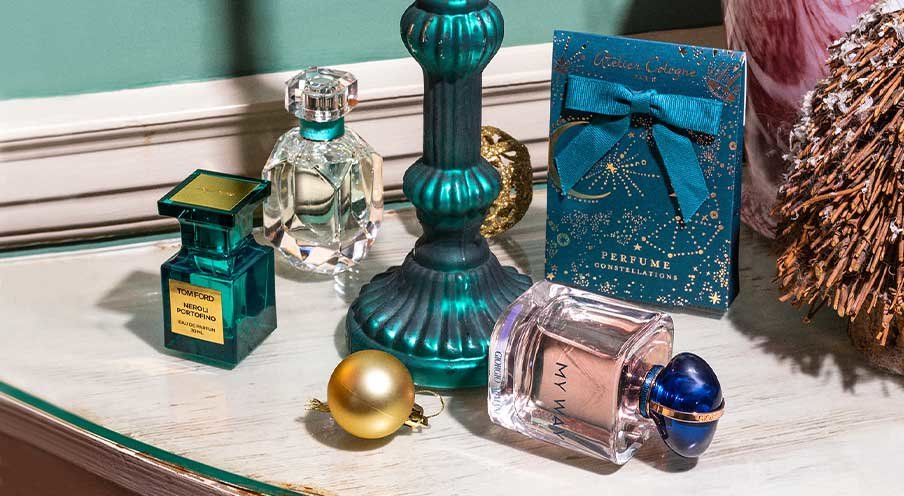Product Description
Medik8’s bestselling vitamin A night serum is formulated with next-generation retinaldehyde (retinal) which is clinically proven to act 11x faster than retinol* for a visibly brighter, smoother and firmer-looking complexion.
Unlike other retinal serums available, Crystal Retinal features Medik8’s unique patented stability system to ensure maximum retinal potency, while their industry-leading encapsulation technology delivers powerful yet gentle results with minimal irritation, even on sensitive skin types.
Loved and recommended by dermatologists and professionals all over the world, Crystal Retinal features a unique ladder of 5 progressive strengths (0.01%-0.2% retinal) so that you can continue to experience increased visible youth-renewing results. If you’re a vitamin A beginner, Medik8 recommends that most people start on Crystal Retinal 3 (0.03%), or Crystal Retinal 1 if you have very sensitive skin (0.01%). If you’re an experienced vitamin A user, start with Crystal Retinal 6 (0.06%) and gradually work your way up to Crystal Retinal 20 (0.2%). To use Crystal Retinal 20, you must have comfortably finished at least 2 tubes of Crystal Retinal 10 due to it containing a high percentage of retinal.
Working to reduce the appearance of stubborn fine lines and wrinkles and dark spots, Crystal Retinal is the ultimate age-defying serum for a healthier, more youthful-looking complexion.
*G. Siegenthaler et al., Retinol and retinal metabolism, Biochemical Journal, 1990, 268, pp 371-378
Key Benefits:
Fast Wrinkle Reducing Power
Clinically proven to visibly reduce wrinkles & dark spots by 20% with just 1 tube*
*Proven via independent clinical study on Crystal Retinal 6. Tested on 33 participants over 12 weeks.
Professional-Grade Results
Retinaldehyde is proven to work up to 11 times faster than classic retinol* - so you can see results sooner
*G. Siegenthaler et al., Retinol and retinal metabolism, Biochemical Journal, 1990, 268, pp 371-378
Radiant, Youthful Skin
97% felt their skin had a more youthful appearance*
*Proven via independent clinical study on 1 tube of Crystal Retinal 6. Tested on 33 participants over 12 weeks.
Effective Results Until the Last Drop
Thanks to Medik8's patented stability complex
Customise Your Routine With 5 Progressive Strengths
A retinal strength for beginners to expert users - even on sensitive skin
Proven Results:
97% felt their skin had a more youthful appearance*
20% reduction in the appearance of wrinkles*
20% reduction in visible hyperpigmentation*
11% increase in skin firmness*
100% felt Crystal Retinal was gentle on their skin*
*Proven via independent clinical study on 1 tube of Crystal Retinal 6. Tested on 33 participants over 12 weeks.
Key Ingredients:
Retinaldehyde
Retinaldehyde (retinal for short) is a revolutionary form of vitamin A that is clinically proven to work 11x faster than traditional retinol* to address the appearance of fine lines and wrinkles, uneven skin texture, loss of firmness and hyperpigmentation without any irritation.
*G. Siegenthaler et al., Retinol and retinal metabolism, Biochemical Journal, 1990, 268, pp 371-378
Hyaluronic Acid
An incredibly hydrating ingredient, hyaluronic acid attracts and retains more than 1,000 times its own weight in water and draws moisture in the upper layers of the skin; leaving it looking visibly supple and deeply hydrated.
Vitamin E
Rich in antioxidants, vitamin E helps to protect the skin against ageing free radicals, while helping to stabilise retinal for maximum results.
Glycerin
A natural humectant that locks moisture into the skin; leaving it feeling comfortable and hydrated.
Good to Know:
CLINICALLY-PROVEN FORMULA
DERMATOLOGIST RECOMMENDED
NO ARTIFICIAL FRAGRANCE
NO SYNTHETIC COLOURS
PARABEN FREE
ALCOHOL FREE
Directions
Step 1
After cleansing in the evening, apply 2 pumps of Crystal Retinal to the face and neck. Allow to absorb then follow with a moisturiser. We recommend Advanced Night Restore which is specifically designed to be used after vitamin A.
Step 2
For new users of Crystal Retinal, phase application in gradually. Use twice a week for the first 2 weeks, every other night for the next 2 weeks, then every night. You should always use a sunscreen the next morning after using vitamin A.
How to Layer Crystal Retinal
PM: In your evening routine, first cleanse and apply your target serum. Follow with Crystal Retinal and finally, your moisturiser.
Ingredients
Aqua (Water), Caprylic/Capric Triglyceride, Glycerin, Isododecane, Cetearyl Olivate, Sodium Acrylate/Sodium Acryloyldimethyl Taurate Copolymer, Cyclodextrin, Eclipta Prostrata Extract, Cetearyl Alcohol, PPG-12/SMDI Copolymer, Sorbitan Olivate, Tocopheryl Acetate, Titanium Dioxide, Squalane, Hydroxyethyl Acrylate/Sodium Acryloyldimethyl Taurate Copolymer, Phenoxyethanol, Melia Azadirachta Leaf Extract, Hydroxypropyl Methylcellulose, Sodium Hyaluronate, Tetrahexyldecyl Ascorbate, Rubus Chamaemorus (Cloudberry) Seed Oil, Pentylene Glycol, Retinal, Alumina, Isostearic Acid, Lecithin, Polyglyceryl-3 Polyricinoleate, Polyhydroxystearic Acid, Sodium Polyaspartate, Climbazole, Disodium EDTA, Daucus Carota Sativa (Carrot) Seed Oil, Hydroxyacetophenone, Lonicera Japonica (Honeysuckle) Flower Extract, Ethylhexylglycerin, Lonicera Caprifolium (Honeysuckle) Flower Extract, 3-O-Ethyl Ascorbic Acid, Dipteryx Odorata (Tonka) Bean Extract, Stearic Acid, Moringa Oleifera Seed Oil, Polysorbate 60, Sorbitan Isostearate, Vanilla Planifolia (Vanilla) Fruit Extract, Decylene Glycol, BHT, 1,2-Hexanediol, Coumarin.










